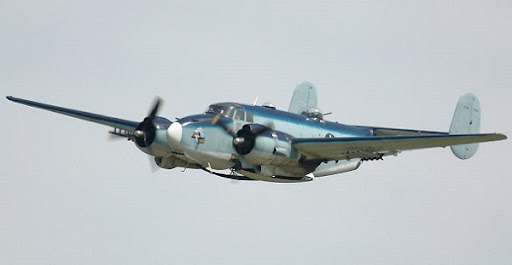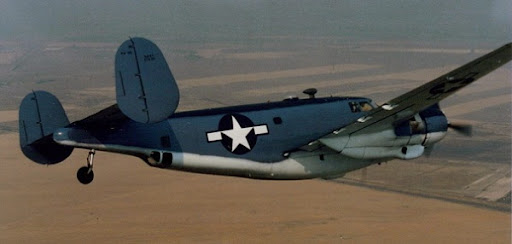I was very moved to read a story on the Backcountry Pilot forum, forwarded to me by Miss D. I don’t mind admitting that it brought a tear to my eye. Perhaps it’ll do the same for you.
He was an old man, suffering from serious depression and an incurable illness. His future, such as it was, looked grim. Just a few weeks earlier he had been diagnosed as having Hodgkin’s disease. In an effort to cheer their father up, his sons had driven him from Massachusetts to the great air show taking place in Genessee. Their dad had been a Navy combat pilot in WWII. He’d often told them stories about his days as a younger man, a man they’d never met and perhaps never really believed existed. But they knew how is eyes would light up when he talked about his wartime experiences. Dad became young again, if only for a moment, as he remembered being strong and healthy, fighting against fascism so many years ago. The boys hoped that being around the old warbirds would lift his spirits for at least a day.
His sons, loving and attentive, helped him out of the car somewhere on one of the fields reserved for parking. He’d been glancing up more frequently as they go closer to the airfield. With a veteran’s practiced eye, he identified the aircraft as they wheeled and banked over the field or taxied to the parking positions. He’d already told his boys that ‘his’ plane wouldn’t be there. They weren’t saved after the war like the more glorified Flying Fortresses or Liberators. Still, young men by the thousands had flown and fought in ‘his’ type of aircraft, and not all of them had made it home. He knew that the model he flew was only a memory shared by a dwindling band of old men like himself. His own sons had never even seen one of the planes that carried him to war. For the most part, no one knew they ever existed. The old planes, like the old man himself, were fading away. Once they had been young, the hope and pride of a nation. But now, no one cared anymore.
They walked slowly along the crowded flight line. Over the rumble of the engines, Dad gestured for his boys. “That one’s a B-17,” he’d explain, “we had those in the Pacific, too. There’s a P-38 Lightning. You can always tell by the twin tail booms. They were good escorts. They went in with us sometimes. We were glad to have them around.”
Further down the line they passed a Japanese Zero. The old man glared at it silently for a moment, some strange emotion passing briefly across his face. His sons didn’t know if it was grief, fear, anger, or a combination of all. He turned and without a backward glance continued his slow walk.
The memories were becoming stronger for him. The breeze carried the scent of rubber, aviation gas, and hot oil, just like his base used to smell. Planes jockeying into position along the line revved their engines, sending gale-force prop wash blowing across the tarmac as people clutched at their hats and leaned into the wind. Overhead was the deep-throated roar of ancient propeller-driven fighter formations passing in review, a sound unlike any other. Air show announcers all over the country call it the same thing: The Sound of Freedom.
The father and his sons ambled along, pausing occasionally to look up at whatever was flying over. After one particularly low pass by a British Spitfire, the boys turned to remark to Dad and saw him standing as if he were frozen in place. He had walked arund the aircraft they’d been looking at and was staring like a man possessed with the next plane in line. A look of incredulous wonder began to spread across his face, “My God,” he whispered. “My God, there it is. It’s someone how I never thought that I’d ever.”
“What is it, Dad? Are you okay?”
He seemed to stand taller and his shoulders squared. “Okay? Hell yes, I’m okay! THERE’S MY PLANE!”
It just so happed that ‘his’ plane was also ‘our’ plane. Lockheed PV-2 “Harpoons” were never immortalized by Hollywood like the Flying Fortresses of “12 O’Clock High,” the B-25 Mitchells of “Catch-22” or any of a score of other films. Why this is so remains a mystery, for the missions they flew were some of the most heroic “and harrowing” of the war.
Flying out of New York , Norfolk , and Pensacola , PV-1s and 2s scoured the Atlantic for Nazi U-boats. The WWII cliche “sighted sub, sank same” is attributed to a PV-1 crew. In the Pacific theater, astonished Navy pilots soon realized that the PV-1 could actually outrun the dreaded Japanese Zeros, a feat unheard of for a medium bomber. The Lockheed’s phenomenal speed saved scores, perhaps hundreds, of American lives.
With the debut of the heavier and more stable PV-2, Marine Corps pilots and ground crews, as usual, made a few non-standard “field modifications.” This normally meant torching extra holes in the nose and welding in as many .50 machine guns as they could cram into the forward bay. The Marines also tore out the torpedo and depth charge racks in the somewhat pregnant-looking bomb bay and installed hooks for 500 pounders and napalm.
As if this wasn’t enough, industrious gunneys even bolted rails under each wing and loaded them with air-to-ground rockets! Aeronautical engineers were appalled when they heard this, but soon reports came back from the combat zones of Harpoons taking on everything from subs and fighters to tanks and heavy cruisers, all with disastrous results to the enemy. The Harpoons could ‘and did” fight anything. And somewhere amidst the fire and fury, somewhere between the Philippines and the Aleutians, there was a young Navy pilot who would live to be taken to Gennessee , New York by his sons!
There’s much more at the link, including a wonderfully moving account of that veteran’s return to the air in the aircraft he once flew in combat against our enemies. Very highly recommended reading.
Here’s a couple of video clips of the actual aircraft mentioned in the article above, a 1944 PV-2 named ‘Hot Stuff’, owned and operated by the American Military Heritage Foundation. The first shows its return to the air in 2005 after a two-year restoration.
The second shows it at the EAA Airventure gathering at Oshkosh in 2007, with the crew describing the aircraft.
Have you thanked a veteran lately for his service? If not, how about doing so today?
Peter



I had a chance to fly on a B-24 that came into town for a fundraiser. On board was a gentleman who flew them in North Africa on raids to Italy and Germany. It was a very emotional day and the crew showed the same respect for the hero.
Gerry
Outstanding Peter, thanks! And thank you for your service!
That is officially a hell of a thing.
Jim
Thank you so much for this and other posts you have provided. You get me headed to so many places on the net I never would have found on my own.